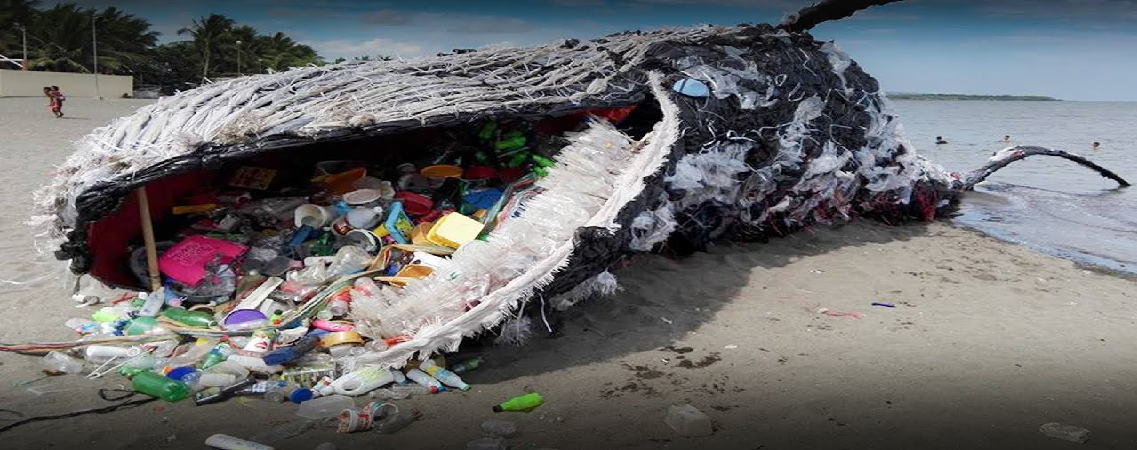
Why Plastic Pollution is a Big Problem?
Edible, biodegradable bags help replace the plastic waste and also help to reduce the plastic pollution, Producing ‘plastic’ bags made from edible, organic food products that can biodegrade in less than a day. Using a combination of 12 ingredients that include bananas, flower oil, tapioca and corn, these bags are organic, edible and naturally biodegradable. Left alone, the bags decompose in about three months. Using water, they can be disposed of in a day or even seconds if using boiling water.
Why Plastic Pollution is a Big Problem?
Right now the major problem for the environment is plastic pollution because the chemical structure of the most plastics renders them resistant to many natural processes for degradation. The degradation may take thousands of years, so in that case, we should be using biodegradable bags for the betterment of ourselves.
Plastic Tricks Birds
SEABIRDS are eating plastic because it smells like their food, scientists at the University of California have discovered. And this is now threatening their survival.
We dump eight million tonnes of plastic waste into our seas and oceans every year. It accumulates a layer of algae, which produce a chemical, dimethyl sulphide (DMS). This smells just like krill, eaten by seabirds. Once a bird has swallowed plastic, it is almost impossible to eject it.
As many as nine out of ten of all the world’s seabirds have plastic in their gut and numbers have fallen by two thirds in 60 years.
Marine animals, including albatross, mistake plastic in the ocean for food
The plastic can perforate a bird’s stomach or make the birds feel full when they’re starving.
Swap It to Stop It
Your actions can stop plastic from entering the ocean.
Reduce, reuse and recycle
Swap plastic bags for reusable bags
Non-Recyclable Lids
There are 1 billion disposable coffee cups thrown away by Australians each year. The lids are made of plastic which most municipalities don’t recycle, and the paper cups are lined with a plastic coating making them non-recyclable and unable to break down in our landfill systems.
It is way too hard to kick the caffeine habit, so why not start a new habit of taking in a reusable coffee cup (if you ask nicely they will even wash it for you!).
In the Bin! not the Burrow!
Between 700 000 and 1 million seabirds are killed from rubbish entanglement or ingestion each year.
Please help the penguins and their environment – put your rubbish in the bin or recycle.
Micro-Plastics
Micro-plastics or ‘nurdles’ are the pre-production plastic resin pellets that are sent all over the world to be turned into consumer plastics, such as soft drink bottles.
Through shipping accidents and industry mismanagement, huge amounts of these pellets find their way into the world’s oceans and onto our beaches.
Once in the water, pollutants can cling to these microplastics at a concentration up to 1 million times the toxicity of surrounding waters. This creates plastics and pollutants into perfect bite sizes for sea creatures.
Plastic Accumulation
Every year there are an estimated 8 million metric tons of plastic waste entering the global oceans. Or, to put it into perspective, the equivalent to 15 grocery bags of rubbish for every meter of coastline on the planet.
This is set to double by 2025.
Once in the ocean, floating plastic can be carried around the globe on ocean currents, becoming concentrated in areas where currents meet. There are five major spots where this occurs on the planet. The largest is known as the Great Pacific Garbage Patch in the North Pacific Ocean, a floating soup of plastic thought to be two times the size of Texas.
Plastic Longevity – Plastic Bags
With an estimated 5.25 trillion particles of plastic (not including other human product wastes) floating in our oceans, it is a frightening thought to consider how long the plastic will take to completely break down.
- Newspaper: 6 weeks
- Cigarette butt: 1-5 years
- Plastic grocery bag: 20 years
- Aluminum can: 200 years
- Plastic bottle: 450 years
- Disposable nappy: 450 years
Edible, biodegradable bags help replace the plastic waste, Producing ‘plastic’ bags made from edible, organic food products that can biodegrade in less than a day. Using a combination of 12 ingredients that include bananas, flower oil, tapioca and corn, these bags are organic, edible and naturally biodegradable. Left alone, the bags decompose in about three months. Using water, they can be disposed of in a day or even seconds if using boiling water.
Plastic Production
Commercial plastic production began just 50 years ago and quickly became a center-point in our lives. It encases the food we buy; it’s in our kitchens, cars, phones, clothes, computers and most things we come into contact with each day.
Plastic’s versatility and cheap production have allowed the level of convenience to increase while keeping the cost of living low.
Plastic production is rapidly rising with a doubling in production every 11 years and has now surpassed 300 million metric tons per year.
